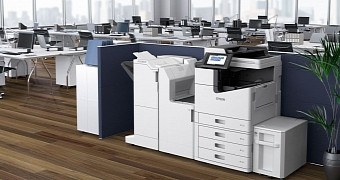The days of laser printers would soon be long gone, as one of the leading companies in printing hardware is about to wave goodbye to this technology.
Epson has recently announced that it’s about to become fully committed to inkjet printers, as the company is planning to stop the production of laser printers by 2026.
Here’s everything you need to know.
As noted by GHacks, Epson has already stopped the sales of laser printers in the majority of markets out there. However, some countries in Asia and Europe continue to sell this type of Epson printers.
The company, therefore, plans to completely ditch laser printer hardware by 2026, with customers in these markets to continue to get consumables and spare parts until a later date when the business would be completely ditched.
“Explaining these decisions, the company cites the greater potential of inkjet to make meaningful advances in sustainability. Epson will continue to support customers by supplying consumables and repair parts after it ceases sales of laser printer hardware,” a press release published by Epson reads.
The main reason for dropping support for laser printers is as simple as it could be: the way inkjet printers work allows for Epson to focus on sustainable hardware, especially because laser hardware uses much more energy and typically requires more consumable parts.
Koichi Kubota, general administrative manager of Epson's Sales & Marketing Division, explained that the printing business will be entirely focused on inkjet technology from now on.
“We've long been committed to sustainable inkjet technology and have now decided to phase out sales of laser printer hardware. As a company, we're totally committed to sustainable innovation and action, and inkjets simply use less energy and fewer consumable parts. While laser printers work by heating and fusing toner to a page, Epson's Heat-Free inkjet technology consumes less electricity by using mechanical energy to fire ink onto the page,” he said.
Indeed, statistics published by Epson itself suggest that inkjet printers are substantially more power-efficient than their laser counterparts.
A study conducted by the company indicates that an inject printer uses 85 percent less energy for typical office use, while also producing up to 85 percent less carbon dioxide.
“This means that for every 6 cedar trees required to absorb the amount of carbon dioxide as a result of using a laser printer, an Epson inkjet printer requires only 1 cedar tree,” Epson says.
For customers, however, another important difference is that inkjet printers require fewer consumables and parts, so in the long term, it’s easier and more cost-effective to adopt this hardware than a laser printer. This also translates to reduced downtime, and we all know how important it is for a printer to always be ready to work in an office environment.
“In terms of waste generation, Epson inkjet printers come with fewer components that need replacing, making it more convenient to operate as it requires only changing the ink and waste ink box versus toner, drum, developer, fusers and more components for laser models. This is not a tiny detail as – with up to 59% less replacement parts compared to laser printers– it results in a significant reduced impact on the environment over the lifetime of a printer,” Epson explains.
At the end of the day, it’s now just a matter of time until laser printers would be phased out, so the future is all about inkjet printers, not only for Epson but most likely for the rest of the industry as well, especially because competitors will almost certainly follow suit in the long term.

 14 DAY TRIAL //
14 DAY TRIAL //